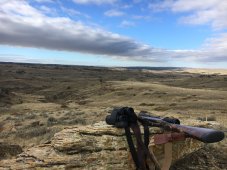That's changed some in Indiana depending on where you are.
You might want to get below the rock cap down where I live, the water is still clean. Other places not so much...
Between industral farm run off, industal manufacturing run off, farm chemicals, etc. you really want the full test done.
I'm in the river bottoms, everything from all over the state winds up down here.
When I was about 6 years old, my grandpa took me to see the river ON FIRE it was so dirty, and all that is still in the sediments so shallow wells, like sand wells, are a bad idea in a lot of places.
I had the drillers go down to limestone, then we started looking for water since the bedrock is limestone here. It's 'Hard' water, but it's clean.
I also got an oversized well casing so I could have both a motorized pump and a hand pump... because you never know...
Just my luck, I spent a small fortune on a well, then hit the well head from the former tenants (from 40-45 years ago) with the mower... It's a shallower well and it's mineral water (coal fields around) but the garden, livestock, etc don't complain.
I had no idea there was a well on the property already, just clearing brush and mowing as I had time... and there it was.



